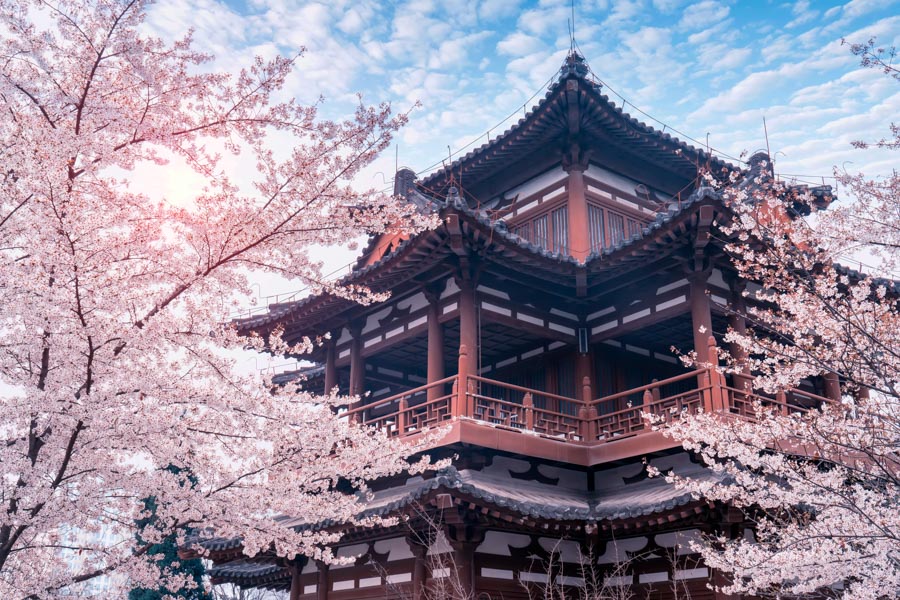
Green Dragon Temple Blooming Cherry Orchards
Admiring sakura is an ancient Chinese tradition, so clear to anyone who loves and feels nature. Spring, when the snow melted, the trees swell with tender buds, and the first bright green young grass fights its way through the ground, strewn last year's leaves, is the time for cherry trees to start blooming. White, creamy, pink and purple flowers herald the awakening of the earth from a long winter sleep, the end of the annual cycle and rebirth of nature. The Green Dragon Temple (Qinglong Temple) is one of the favorite places for Xi’an people where they can enjoy the cherry blossoms.
It has a magnificent cherry orchard with pavilions, pagodas, bridges and benches, as if drawn from the Chinese traditional miniatures. Every year from May to June, the garden is visited by thousands of tourists as well as the Xi'an people - they walk there with their families, young people communicate after school, couples of lovers enjoy the surrounding beauty, the old relax while children rejoice. By the way, the Green Dragon Temple once was known as the Temple of Inspiration. Looking at the surrounding beauty, one can understand why.
During the reign of the Tang Dynasty (618 - 907) it was the place for Japanese monks to study Buddhism there. The most educated of them Kukai achieved great success in teaching. In addition to Buddhism, he was enthusiastic about local culture, calligraphy, and Chinese poetry, in particular.
On coming back to his homeland, Kukai founded a Buddhist Order and built a temple. For his merits and contribution to Buddhism dissemination, Kukai is revered both in Japan and China. In the Green Dragon Temple, one can see the Kukai Monument.
The Green Dragon Temple itself is very beautiful, but, unfortunately, it is a remake. Although the architecture of the building follows the Tang style, it was built as late as 1963 - half a century ago. The ancient temple building, erected there since 582 years, was destroyed at the beginning of the XII century by the Northern Song Dynasty. At that time, such a fate was shared by many Buddhist temples.

